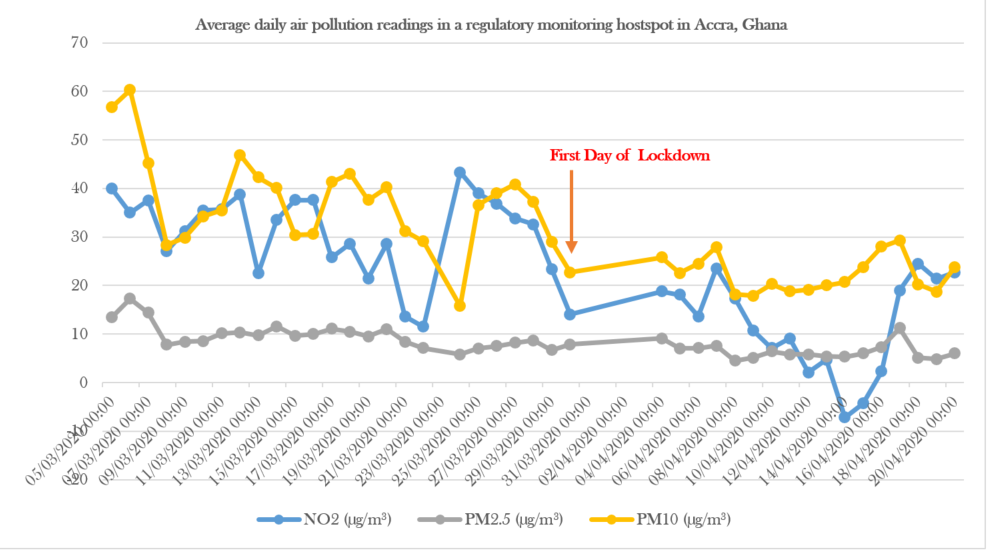
Lloyds Banking Group Centre for Responsible Business, University of Birmingham
In the battle to slow the spread of COVID-19, countries around the world are restricting social gatherings, encouraging working from home, closing schools and restricting public events. As a result, this brutal pandemic has inadvertently made the invisible and silent killer of air pollution now visible.
After just a few weeks of these short-term lockdown measures restricting people and vehicular movement, there has been an observable and drastic reduction in traffic and air pollution in major urban cities within both the northern and southern hemispheres. For instance, in Ghana, West Africa, where I am leading an ongoing research sandpit that uses real-time low-cost air-monitoring sensors, pollution levels at a traffic hotspot in the capital Accra have fallen since the lockdown came into effect.

Funded by The Institute for Global Innovation (IGI) and Institute of Advanced studies, and partnering with the Department of Geography and Resource Development, University of Ghana, the study aims to explore air pollution health impacts and monitor in real-time the levels of key toxic pollutants, such as nitrogen dioxide (NO2), ozone (O3) and particulate matter (PM2.5 and PM10) in Ghana’s major cities. Air pollution is responsible for over 28,000 premature deaths every year in Ghana, with regulatory measures to robustly tackle air pollution still lacking – just as they are in other major world economies, including the UK.
Many of the pre-existing health conditions – such as cardiovascular disease and asthma – that dramatically elevate the risk of complications and death from COVID-19 are well known to be caused by long-term exposure to high concentrations of toxic air pollutants. Thus, people with pre-existing conditions living or working in more polluted cities are particularly at risk of being hospitalised by COVID-19. New studies, including one from Harvard University, also link air pollution to significantly higher rates of death in people with COVID-19.
This correlation between the COVID-19 mortality and morbidity rate and poor air quality shows the urgency for policymakers to start discussing ‘cleaner air for all’ and reboot efforts once the pandemic is over. Like many government and World Health Organisation public messages and actions for COVID-19 prevention and control, such as washing your hands for 20 seconds, couldn’t there be similar messages and actions for how to breathe and maintain cleaner air? After all, clean air is also key to ‘flattening the curve’ of thousands of premature deaths each year. And while avoiding a post-pandemic recession is important, this is not the time to start relaxing environmental pollution rules on struggling businesses and economies. A jump-started economy that continues to choke so many people to death from air pollution is not healthy for anyone.
We cannot afford to return to a pre-pandemic ‘business as usual’ scenario. Policymakers should be looking to strengthen urban air quality and environmental emissions regulations to maintain the lower pollution levels of recent weeks. Crucially, authorities with power also need to take into account issues of social vulnerability and the disparity in the vulnerable, disadvantaged or poorer people’s access to power, knowledge and resources. Only by policymakers risking their political values and philosophy, to deal with ‘the politics of disadvantage’ and make better environmental quality a key building block of local community planning, can we hope to create more equitable and resilient societies that will be better future-proofed against another global shock.

Very good article that needs serious consideration from policy makers.
Very thought provoking.
This has open a new debate on how to approach post lockdown by government and the society in general, if we are to maintain this low level of air pollution.Very good aarticle.